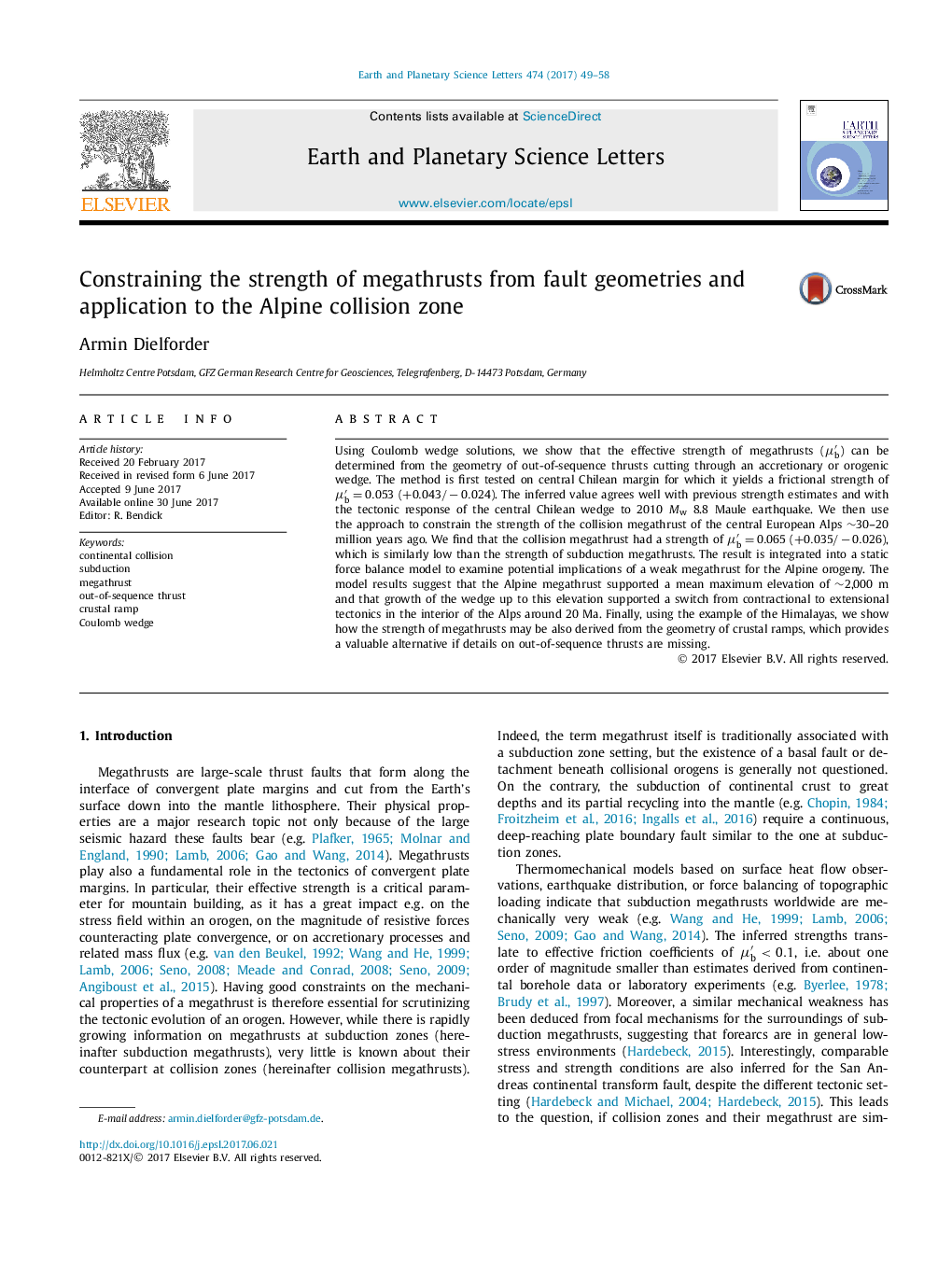| کد مقاله | کد نشریه | سال انتشار | مقاله انگلیسی | نسخه تمام متن |
|---|---|---|---|---|
| 5779718 | 1634682 | 2017 | 10 صفحه PDF | دانلود رایگان |
- We constrain the strength of megathrusts and orogenic wedges from fault geometries.
- The collision megathrusts in the European Alps and Himalayas are very weak.
- The strength is comparable to the strength of subduction megathrusts.
- In the Alps, the low strength supported the onset of extensional tectonics.
Using Coulomb wedge solutions, we show that the effective strength of megathrusts (μbâ²) can be determined from the geometry of out-of-sequence thrusts cutting through an accretionary or orogenic wedge. The method is first tested on central Chilean margin for which it yields a frictional strength of μbâ²=0.053 (+0.043/â0.024). The inferred value agrees well with previous strength estimates and with the tectonic response of the central Chilean wedge to 2010 Mw 8.8 Maule earthquake. We then use the approach to constrain the strength of the collision megathrust of the central European Alps â¼30-20 million years ago. We find that the collision megathrust had a strength of μbâ²=0.065 (+0.035/â0.026), which is similarly low than the strength of subduction megathrusts. The result is integrated into a static force balance model to examine potential implications of a weak megathrust for the Alpine orogeny. The model results suggest that the Alpine megathrust supported a mean maximum elevation of â¼2,000 m and that growth of the wedge up to this elevation supported a switch from contractional to extensional tectonics in the interior of the Alps around 20 Ma. Finally, using the example of the Himalayas, we show how the strength of megathrusts may be also derived from the geometry of crustal ramps, which provides a valuable alternative if details on out-of-sequence thrusts are missing.
Journal: Earth and Planetary Science Letters - Volume 474, 15 September 2017, Pages 49-58
